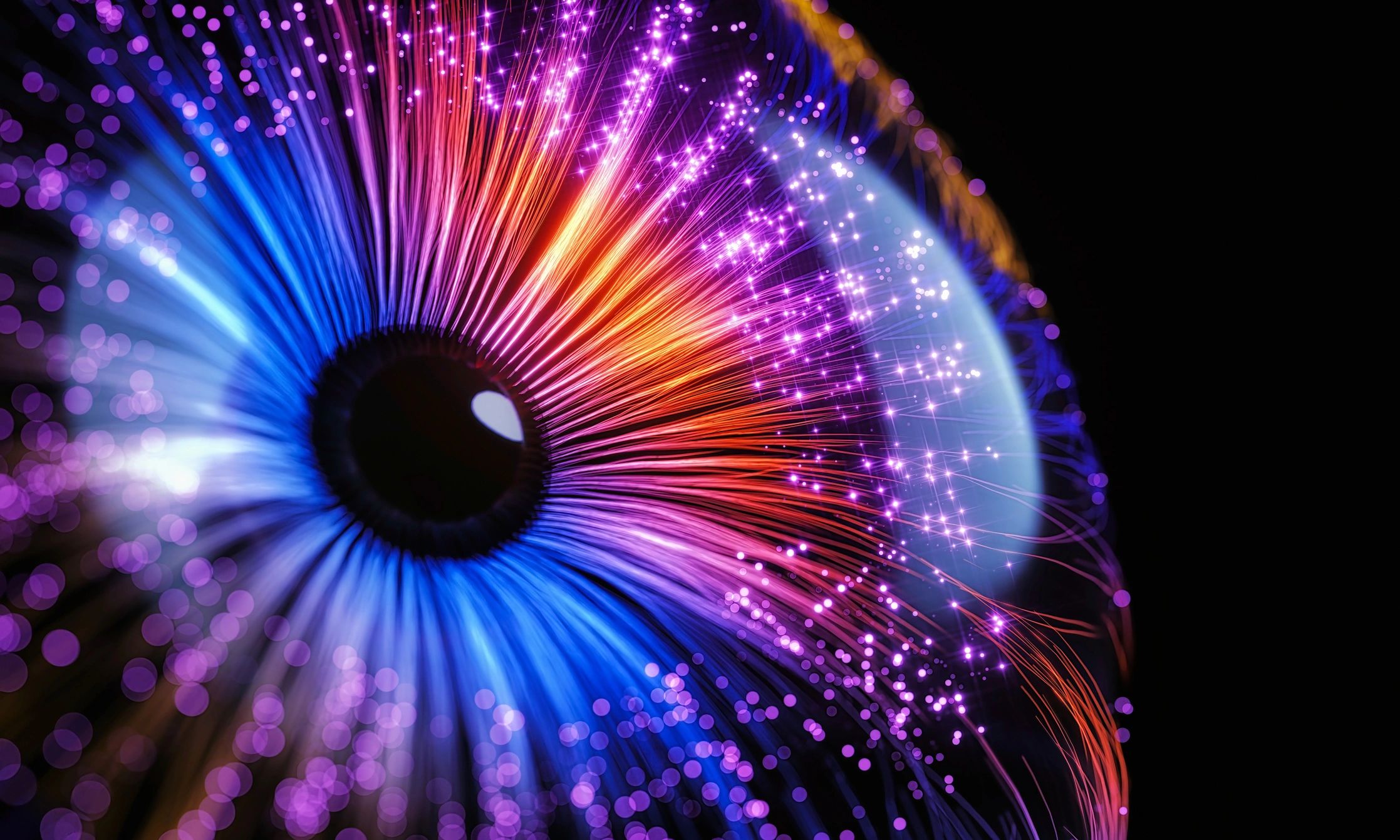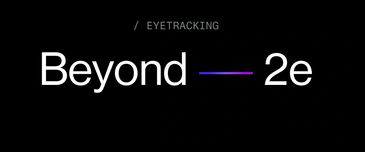
Developed by Dr. Jeremy Schmoe DC DACNB
More Specific Vestibular Motion stimulation in 6d
This is NODULUS: Are you Ready?
NODULUS is a cutting-edge functional neurology technique designed to push the boundaries of neurological rehabilitation and performance optimization.
Developed by Dr. Jeremy Schmoe DC DACNB, this method targets vestibular function, sensorimotor integration, and postural control by tapping into how the brain interprets gravity, motion, velocity, and position.
Using principles of velocity storage, gravitational detection, and multi-dimensional vestibular stimulation, NODULUS improves balance, vision, motor output, and spatial awareness. These systems are foundational to human movement and performance, making NODULUS a powerful tool for ADULTS and CHILDREN with neurological challenges, athletes, and high-performers alike.
Innovative Neuro Performance Solutions
Virtual Reality Technology
Virtual Reality Technology
Virtual Reality Technology
Touch Screen Integration
Virtual Reality Technology
Virtual Reality Technology
Optokinetic Training
Virtual Reality Technology
Proprioceptive Challenges and Arpwave Neurostimulation
Proprioceptive Challenges and Arpwave Neurostimulation
Low tech options for clinical integration. Manual movement option.
Proprioceptive Challenges and Arpwave Neurostimulation
VNG Challenges in Motion
Low tech options for clinical integration. Manual movement option.
Low tech options for clinical integration. Manual movement option.
Low tech options for clinical integration. Manual movement option.
Low tech options for clinical integration. Manual movement option.
Low tech options for clinical integration. Manual movement option.
About Nodulus FX Neuro

Bigscreen VR Headset
Bigscreen Beyond 2 redefines immersion with next-gen optics delivering stunning edge-to-edge clarity and a wider field of view. It's packed with new capabilities like adjustable IPD for ease of sharing and advanced eyetracking. Now even lighter at just 107 grams.

the Motion 6 Pro
The PRO 6 provides true 6 degrees of freedom, accurately simulating heave, roll, pitch, and yaw with separate front and rear roll centers for body roll and yaw, alongside true side-to-side and front-to-back motion. Accelerations are faithfully simulated, not solely by tilting the seat or cockpit, and understeer, oversteer, and drifts each offer distinct sensations as they should. It stands unparalleled in the market.

Beyond 2e Eyetracking
Beyond 2e Eyetracking
Beyond 2e features integrated eyetracking with incredibly tiny camera sensors the size of a grain of sand. Our advanced AI and computer vision research has resulted in a state-of-the-art pupil model, with inference running on AMD and NVIDIA GPUs.
Micro-OLED displays with custom-designed pancake optics, and exceptionally accurate 6DOF tracking with SteamVR tracking.
new Visual-Vestibular performance for adults and Children
What is NODULUS ?
NODULUS is an advanced functional neurology technique developed by Dr. Jeremy Schmoe. It is designed to optimize neurological rehabilitation, vestibular function, and sensorimotor integration by leveraging how the brain processes gravity, velocity, and position to maintain balance, eye movement control, and postural awareness . By incorporating the principles of velocity storage and gravitational detection, NODULUS enhances a patient’s ability to maintain postural control, stabilize vision, and regulate motor output. These mechanisms are vital components of the vestibular system, supporting efficient motion perception, gaze stabilization, and postural reflexes.
Understanding Velocity Storage & Gravitational Detection
Velocity Storage Mechanism: The velocity storage mechanism is a central vestibular process in which the brain prolongs the duration of vestibular signals originating from the semicircular canals . In essence, it acts like a short-term memory for head rotation signals, allowing for a smoother and more sustained
perception of motion and orientation, especially during prolonged or slow head movements.
Key features of the velocity storage mechanism include:
Gravity Detection
How NODULUS Incorporates Velocity Storage & Gravitational Detection
NODULUS uses a progression-based rehabilitation model that combines advanced
diagnostics with targeted training to recalibrate both velocity storage and gravitational
awareness. The therapy is structured in stages, each building on the previous, to gradually
restore normal vestibular processing
Clinical Applications of NODULUS
Powerful, research-informed rehabilitation approach for various clinical conditions:
• Vestibular Dysfunction: Patients with vestibular disorders (e.g vestibulopathies, chronic dizziness) benefit from improved velocity storage function and gravitational
perception. Recalibrating these systems helps restore balance and
stability, reducing dizziness and motion sensitivity in conditions like unilateral vestibular loss or persistent postural-perceptual dizziness (PPPD).
• Migraine-Associated Dizziness: Many migraine and headache syndromes
have a vestibular component(vestibular migraine). NODULUS addresses vestibular triggers linked to motion perception errors, such as sensitivity to visual motion or head movement. By normalizing velocity storage and otolith function, it can reduce dizziness and imbalance that often accompany migraines, potentially decreasing the frequency of motion- induced migraine episodes.
• Whiplash Concussion & Cervical Dysfunction: Whiplash injuries and cervical spine problems can disrupt the integration between neck proprioception and vestibular input, sometimes leading to dizziness orunsteadiness (cervicogenic dizziness). NODULUS training, by enhancing cervical-vestibular integration and gravitational awareness, helps patients re-establish a correct sense of head position and movement. Improved otolith function and neck reflex coordination alleviate symptoms of disorientation and promote better postural control in these patients.
• Postural Instability & Gait Disorders: Individuals with balance disorders, frequent falls, or
gait instability (such as elderly patients or those recovering from neurologic injury) gain better spatial awareness and postural reflexes through NODULUS. By strengthening the perception of gravity and motion, the program improves movement precision and automatic postural responses. This is especially useful in neurological conditions like Parkinson’s disease (to improve balance reactions) or after concussion/brain injury (toretrain the vestibular system for safe ambulation). In each of these applications,
NODULUS tailors the progression of exercises to the patient’s specific deficits, whether they lie in sustaining vestibular signals, interpreting gravity, or coordinating eye-hand movements. The result is a more personalized rehabilitation that directly targets the underlying sensorimotor integration issues of the condition.
Innovative Performance for DC, PT, OT, MD, OD, DACNB

How NODULUS Incorporates Velocity Storage & Gravitational Detection
NODULUS uses a progression-based rehabilitation model that combines advanced
diagnostics with targeted training to recalibrate both velocity storage and gravitational
awareness. The therapy is structured in stages, each building on the previous, to gradually
restore normal vestibular processing:
1. Perception & Proprioception Training: Patients begin with slow, manual exercises that heighten awareness of body position and movement. These controlled movements (often done with eyes closed or minimal visual input) emphasize feeling the pull of gravity and the body’s orientation. The goal is to refine the patient’s proprioception (sense of bodyposition) and basic gravitational detection, laying the groundwork for understanding upright positioning and balance.
2. Optokinetic & Vestibular Training (Motion6 Platform): Using specialized equipment (such as the Motion6 platform) and visual stimuli, patients undergo dynamic exercises that challenge the vestibular system. This may include gentle spinning or tilting motions combined with optokinetic stimulation (moving visual patterns). These exercises are designed to enhance velocity storage function by stimulating the vestibular system over longer durations and training the eyes to remain steady (improving gaze stabilization). Essentially, this stage pushes the VOR to adapt — extending its response and calibrating the brain’s timing of vestibular signals — while also engaging the otolith organs through head movements in different orientations.
3. Hand-Eye Coordination & Sensorimotor Integration: As patients improve, NODULUS adds tasks that integrate hand-eye coordination with vestibular challenges. For example, the patient might perform arm or head movements of varying speeds or in different positions relative to gravity (looking up, bending down, etc.) while tracking a target with their eyes or performing coordination drills. These drills reinforce the coupling between what the vestibular system senses (head motion, orientation) and the motor responses of the eyes and limbs. By practicing with varied velocities and body orientations, the brain learns to coordinate sensory input and motor output more effectively, reinforcing vestibular adaptation to both angular motion (velocitystorage) and linear/gravitational cues.
4. Fast Vestibular- Ocular Motion Training: In the final stages, patients engage in high- speed head and eye movement exercises. This might involve rapid head turns while focusing on a point (to challenge the VOR at higher velocities) or quick changes in body
orientation (to challenge gravitational righting reflexes).
5. Targeting electrical stimulation of the neck and lower extremities with movements and position holding utilizing Arpwave Direct current.
The high-speed training solidifies the compensation of the velocity storage mechanism — ensuring that even quick or repetitive head movements don’t cause dizziness or loss of visual focus — and also fine- tunes the brain’s alignment to gravity during dynamic movements. By the end of this stage, the patient’s vestibulo-ocular reflex and gravity sense are more robust and can handle daily life activities that involve complex motion.
Through these progressive steps, NODULUS gradually recalibrates the vestibular system. Early stages focus on awareness and basic reflex tuning, while later stages drive adaptation under more challenging conditions. Throughout, the integration of visual cues, proprioceptive feedback, and vestibular exercises ensures that improvements translate to real- world functional gains.
Utilizing the Vestibular Motion Pro
incorporating velocity storage and gravitational detection mechanisms into
neurological rehabilitation has opened a new frontier in functional neurology. NODULUS
provides a structured, science-driven approach that retrains the brain’s processing of motio and gravity signals, thereby optimizing motion perception, balance control, and gaze stability. Patients who undergo this rehabilitative program experience improvements in their ability to stay oriented, maintain clear vision during movement, and keep steady posture in the face of challenges. This innovative approach is transforming the way clinicians help patients recover from vestibular and neurological dysfunction, offering hope for faster and more complete recovery of function through targeted neural recalibration.
Through NODULUS’s progressive visual-vestibular and sensorimotor training, what was once an impaired system for detecting gravity, velocity, and position becomes a robust framework for everyday stability and orientation. This integration of traditional vestibular rehabilitation with cutting-edge concepts of velocity storage and otolith function exemplifies a comprehensive, holistic strategy to neurological recovery. It not only addresses symptoms but also fundamentally reshapes the neural pathways involved in balance and eye movement control, leading to long-lasting improvements in patients’ daily lives.
Our Partners




More Specific stimulation in 6D

Visual-Vestibular Integration VVI
Dynamic Proprioceptive Stimulation – Enhancing body awareness, spatial orientation, and postural control.
Core Activation & Stability Training – Challenging the neuromuscular system to build midline stability and postural endurance.
Visual-Vestibular Integration
Aiding in adaptability to motion, improving gaze stabilization and balance responses.
Multi-Directional Movement – With full 6 Degrees of Freedom (6DOF)—pitch, roll, yaw, surge, sway, and heave—it mimics real-world balance challenges.
VR Compatibility & Visual Technology Integration – Enhancing training with virtual reality environments and touchscreen visual reaction drills, optimizing eye-hand coordination and reaction time training.
Postural & Primitive Reflex Integration – Supporting neurological development and rehabilitation for both children and adults by addressing retained reflexes and postural imbalances.
This website uses cookies.
We use cookies to analyze website traffic and optimize your website experience. By accepting our use of cookies, your data will be aggregated with all other user data.
